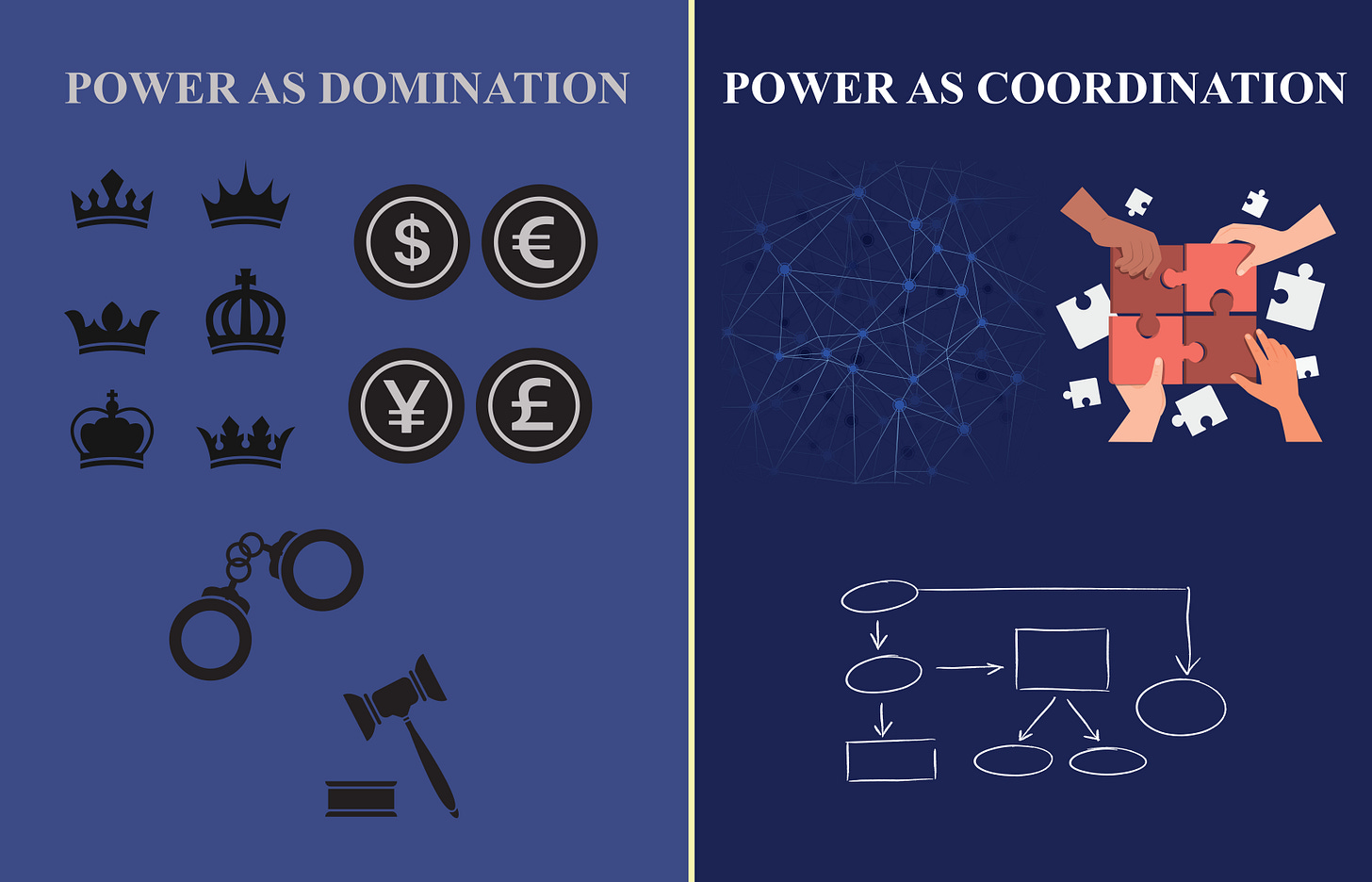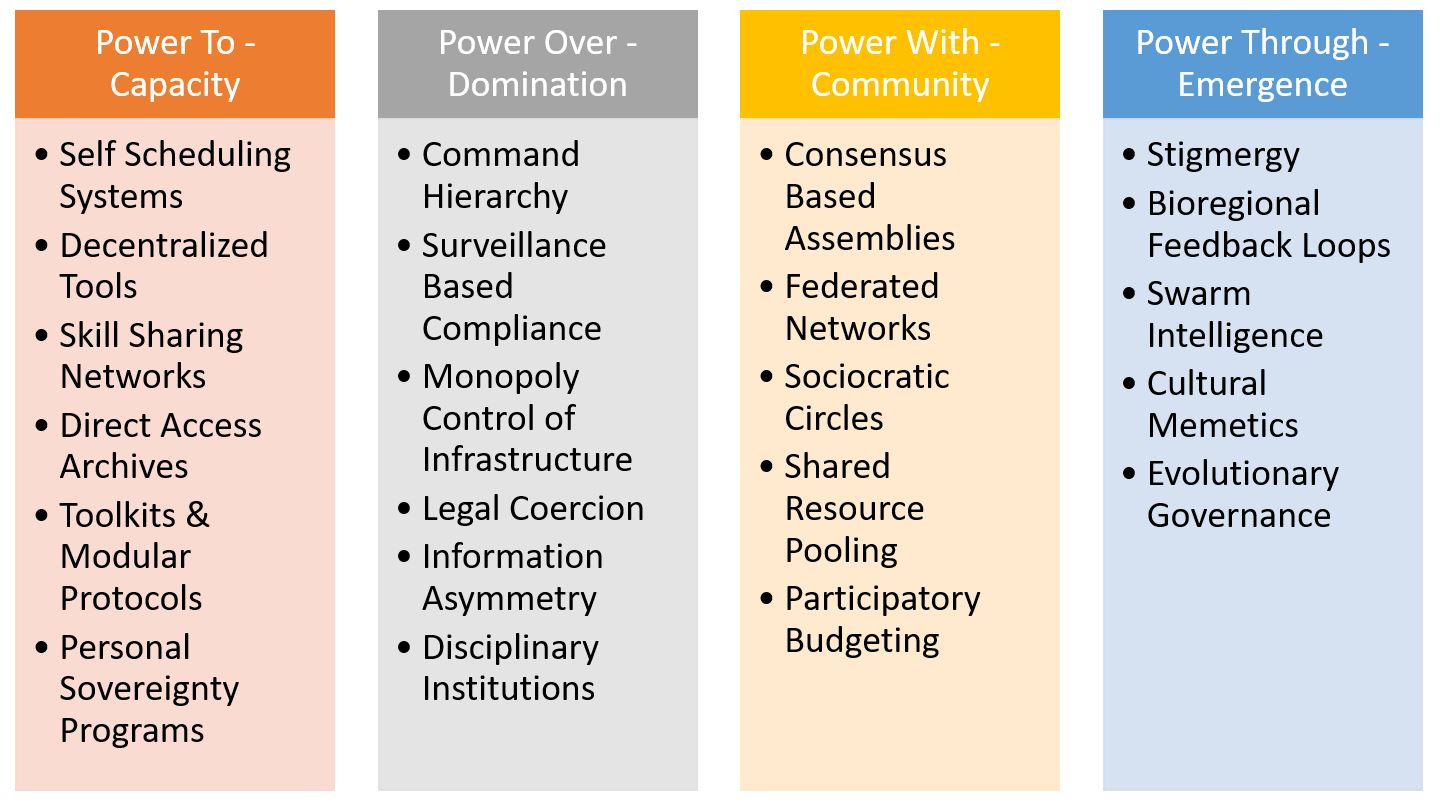Power is too often understood as a matter of brute force, coercion, or the accumulation of material wealth. Theories of power, from Max Weber’s bureaucratic authority to Steven Lukes’ three-dimensional model, have sought to explain its many faces; whether visible, hidden, or insidious. Yet, in all these models, power is still treated as something that is wielded, a possession of rulers, institutions, or structures. What is missing from this analysis is a more fundamental reality: power is not simply exercised but emerges from the very act of coordination itself.
The dominant forms of governance, economic exchange, and social organization are all dependent on coordination, on the ability to synchronize actions, align interests, and sustain collective behavior. If coordination is what makes power possible, then power itself should not be understood as merely a consequence of coordination but as an attribute of coordination. This distinction is not just theoretical, it is deeply practical, as it reveals the stakes of social struggle, the mechanics of domination, and the avenues of resistance.
Coordination: The Foundation of Power
Consider any historical system of control: feudalism, divine kingship, military juntas, capitalism, state bureaucracies, chattel slavery, debt peonage, corporate governance, religious orthodoxy, caste systems, or imperial rule. None of these functioned through raw coercion alone. Instead, they relied on elaborate systems of coordination; tax collection, logistics, financial networks, labor hierarchies, ideological narratives, and administrative institutions, to sustain themselves. The centralized command of a king or the profit-seeking strategy of a corporation is only effective to the degree that it successfully orchestrates the actions of others.
Capitalism, for instance, is not just an economic system; it is a coordination system. The market is a coordination mechanism that aligns individuals through price signals, while corporations coordinate labor through hierarchical command structures. The financial system coordinates capital through the mechanism of interest rates and credit allocation. The state, in turn, coordinates population management through bureaucracy, legislation, and surveillance. Without these mechanisms, capitalist power would collapse, not because resistance overthrew it, but because it would lack the ability to maintain coherence.
Coordination at the Individual Scale
Before coordination manifests at the scale of societies, organizations, or states, it begins at the level of the individual. The ability of a person to act, to make decisions, and to exert influence in the world is itself a product of coordination, both internal and external.
Biological Coordination – The body is an intricate system of coordination. Neural networks, hormonal signaling, and sensory feedback loops allow an individual to process information, make decisions, and execute actions. The very ability to think and act is predicated on internal coordination mechanisms.
Informational Coordination – No individual acts in a vacuum. The ability to navigate the world depends on the coordination of information; memory, perception, language, and knowledge networks that frame choices and possibilities. The more effectively an individual can integrate and process information, the greater their capacity to organize actions.
Cultural & Historical Coordination – Individuals are embedded in cultural and historical contexts that shape their perceptions, values, and modes of action. The myths, traditions, and inherited institutions that define a society condition how individuals coordinate their own behaviors within larger systems.
Ideological Coordination – Belief systems provide a framework for making sense of the world and determining what actions are possible or desirable. Ideology acts as a coordination mechanism that aligns individuals with broader social, political, and economic structures.
These forms of coordination at the individual level scale upwards, from individuals to small groups, from groups to organizations, from organizations to polities, corporations, nation-states, and international coalitions. Each level introduces new layers of complexity, but the fundamental principles remain the same: the structure of coordination determines the form and function of power.
Coordination as an Analytical Framework
Recognizing coordination as the source of power allows us to go beyond traditional critiques of authority. If power is located in the structures that enable coordination, then a true theory of power must be one that dissects these structures. To do this, we need a framework that categorizes coordination mechanisms not just by their outcomes but by their fundamental characteristics:
Origin of Coordination – Who initiates coordination? Is it imposed from above (centralized) or emergent from below (decentralized)?
Structure of Participation – Who is included in the coordination process? Who is excluded?
Decision Flow – How are decisions made, communicated, and enforced?
Scope of Coordination – What is being coordinated? Is it limited to specific domains (economic, political, cultural) or is it systemic?
Mode of Internalization – How do participants internalize the rules of coordination? Through coercion, consent, ideology, or incentives?
Feedback & Adaptation – How does the system respond to resistance, disruption, or environmental changes?
This framework allows us to compare different forms of coordination across history, identifying whether systems that seem distinct (state socialism, capitalism, anarchist federations) actually share similar coordination mechanisms. By using coordination as the unit of analysis, we are able to see through ideological distortions and recognize power for what it is: the capacity to organize action.
The Revolutionary Implications of Coordination as Power
Understanding power as coordination has profound consequences for liberation struggles. Too often, resistance movements focus on who wields power rather than on how power is structured. If power is a byproduct of coordination, then dismantling oppressive power structures requires not just confronting rulers but disrupting and replacing their coordination mechanisms. This means:
Sabotaging exploitative coordination systems (e.g., financial networks, surveillance infrastructures, supply chains) to weaken their capacity to reproduce power.
Constructing alternative coordination systems (e.g., worker cooperatives, mutual aid networks, autonomous digital platforms) that allow for non-hierarchical forms of social organization.
Developing counter-coordination strategies that can resist co-optation and state repression.
This approach does not merely seek to redistribute power within existing coordination mechanisms (as electoral and reformist politics attempt to do). Instead, it calls for a fundamental restructuring of how coordination itself is organized.
Conclusion: A New Lens for Liberation
A theory of Coordination as Power does not just describe the world, it provides a strategic blueprint for changing it. By shifting our focus from power as an object to power as a process, we gain the ability to analyze, predict, and intervene in systems of domination more effectively. This is not just a matter of intellectual clarity; it is a necessity for survival. If we are to dismantle oppressive power, we must first understand its logic, and if we are to build a world beyond domination, we must master the art of coordination on our own terms.
This is the challenge before us: to see power not as a thing to be seized, but as a web of coordination that can be unraveled, reassembled, and ultimately, made our own.






Have you heard of coordination dynamics? It’s a branch of neurophysics. To be honest this is really good stuff but it looks more like AI than your own personal research. Where is it that you are personally most invested in this content?